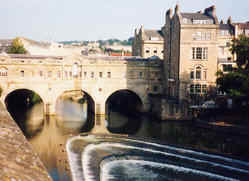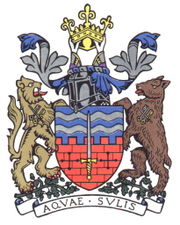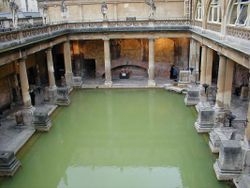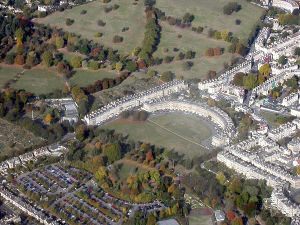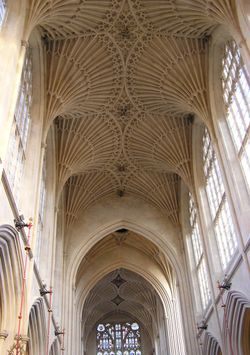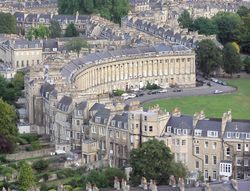|
SPA TOWNS |
|
|
HOME | BIOLOGY | FILMS | GEOGRAPHY | HISTORY | INDEX | MUSIC | THE BOAT | SOLAR BOATS |
|
|
SPA, BELGIUM
'Spa' is a municipality located in the Belgian province of Ličge. It is situated in a romantic valley amid hills which form part of the Ardennes chain, some 35 km (22 miles) southeast of Ličge, and 45 km (28 miles) southwest of Aachen. On 1 January 2005, Spa had a total population of 10,568. The total area is 39.85 km˛, giving a population density of 265.2 inhabitants per km˛.
'Spa' the water city, Belgium
As the famed site of healing hot springs, Spa has been frequented as a watering-place since as early as the 14th century. Though other sources of healing hot mineral springs have become famous throughout the world, it is the town of Spa which has become eponymous with any place having a natural water source that is believed to possess special health-giving properties. As a generic term, the word "spa" may also refer to a resort hotel usually located near a source of mineral water or hot spring which offers hot-tub or similar warm-water hydromassage facilities.
In 1918 the German Army established its principal Headquarters in Spa, and it was from here that the delegates set out for the French lines to meet Marshal Foch and sue for peace in the consultations leading up to the Armistice which ended the First World War. The town is perhaps best known today as home to the Circuit de Spa-Francorchamps, which hosts the annual Formula One Belgian Grand Prix. It is also the location of mineral water producer Spa.
BATH, UNITED KINGDOM
Bath is a city in South West England most famous for its baths fed by three hot springs. It is situated 96.8 miles (155.8 km) west of Charing Cross in London. Its residents style themselves 'Bathonians'.
The city was first documented as a Roman spa, although tradition suggests that it was founded earlier. The waters from its spring were believed to be a cure for many afflictions. From Elizabethan to Georgian times it was a resort city for the wealthy. As a result of its popularity during the latter period, the city contains many fine examples of Georgian architecture, most notably the Royal Crescent. The city has a population of over 80,000 and is a World Heritage Site.
Palladian-style Pulteney Bridge and the weir at Bath
Geography
Situation and transport
Bath is located at . It is approximately 25 kilometres (15 miles) south-east of the larger city and port of Bristol, to which it is linked by the A4 road, and is a similar distance south of the M4 motorway. Its main railway station, Bath Spa, lies on the Great Western Railway, the main line between Bristol and London, as well as the line linking Cardiff with Portsmouth.
Bath is connected to Bristol and the sea by the River Avon, navigable via locks by small boats. The river was connected to the River Thames and London by the Kennet and Avon Canal in 1810; this waterwayclosed for many years, but restored in the last years of the 20th centuryis now popular among users of narrow boats, and was historically an important water route to London.
Physical geography
Bath is centred on the bottom of the Avon Valley, located at the southern edge of the Cotswolds, a range of limestone hills designated as an Area of Outstanding Natural Beauty. The hills that surround and make up the city have a maximum altitude of 238 metres (780 ft) on the Lansdown plateau. It has an area of 29 km˛ (11 mile˛).
The surrounding hills give Bath its steep streets and make its buildings appear to climb the slopes. The flood plain of the River Avon, which runs through the centre of the city, is at an altitude of 17 metres. The river, once an un-navigable series of braided streams broken up by swamps and ponds, has been managed by weirs into a single channel. Nevertheless, periodic flooding was normal until major flood control works in the 1970s; this shortened the life of many buildings in the lowest part of the city. Climate
The climate of Bath is temperate, although significantly warmer than some other locations at a similar latitude due to the warming influence of the Gulf Stream. It is on average drier and warmer than more northerly parts of the United Kingdom. The prevailing winds are south-westerly, from the North Atlantic Current. More than 50% of the days are overcast. There are few natural hazards, although there can be strong winds and floods, especially in winter.
In 2003 the annual mean temperature was 10.3 °C, with extremes at 14.2 °C and 6.5 °C (50.5 °F, 57.5 °F and 43.7 °F, respectively). There were 1645 hours of sunshine, and 957 millimetres of rainfall. The temperatures, sunshine duration and rainfall are higher than the United Kingdom averages (which are 9.5 °C, or 49 °F, 1587 hours and 901.5 millimetres, respectively).
Coat of Arms of Bath
Politics
The Liberal Democrat Don Foster is the Member of Parliament for Bath. His election was perhaps the most notable result of the 1992 results, as Chris Patten, the previous Member (and a Cabinet Minister), played a major part, as Conservative Party Chairman, in getting the government of John Major re-elected, but failed to defend his marginal seat in Bath. Don Foster has been re-elected as the MP for Bath in every election since.
Historically part of the county of Somerset, Bath came into Avon when that non-metropolitan county was created in 1974. Since the abolition of Avon in 1996, Bath has been the main centre of the Unitary Authority of Bath and North East Somerset (B&NES). Bath's city council was abolished in 1996; its ceremonial functions, including the mayoralty, are maintained by the "Charter Trustees", viz. all those B&NES councillors for wards within the city limits. There have been calls to set up a parish council for Bath, but it would be larger than any precedent (the largest, Weston-super-Mare has a population of about 70,000), and many have argued that it would be impractical.
Demographics
According to the UK Government's 2001 census, Bath, combined with the immediate surrounding area, has a population of 169,040, with an average age of 39.9 (the national average being 38.6). According to the same statistics, Bath is overwhelmingly populated by people of a white ethnic background, 97.2%significantly higher than the national average of 90.9%. Other ethnic groups in Bath, in order of population size, are multiracial at 1%, Asian at 0.5% and black at 0.5% (the national averages are 1.3%, 4.6% and 2.1%, respectively).
The city is largely Christian at 71%, with no other religion reaching more than 0.5%. These figures generally compare with the national averages, though the non-religious, at 19.5%, are significantly more prevalent than the national 14.8%. Only 7.4% of the population describe themselves as "not healthy" in the last 12 months, compared to a national average of 9.2%; only 15.8% of the inhabitants say they have had a long-term illness, as against 18.2% nationally.
Roman Baths from the upper level of the site Loss of the original roof encourages green algae growth
History
The archaeological evidence shows that the site of the main spring was treated as a shrine by the Celts, and dedicated to the goddess Sulis. The Romans probably occupied Bath shortly after their invasion of Britain in 43 AD. They knew it as Aquae Sulis (literally "the waters of Sulis"), identifying the goddess with Minerva. In Roman times the worship of Sulis continued and messages to her scratched onto metal have been recovered from the Sacred Spring by archaeologists. These are known as curse tablets. The corpus from Bath is the most important found in Britain.
During the Roman period, increasingly grand temples and bathing complexes were built in the area, including the Great Bath. Rediscovered gradually from the 18th century onward, they have become one of the city's main attractions. The city was given defensive walls, probably in the 3rd century. From the later 4th century on, the western Roman Empire and its urban life declined. However, while the great suite of baths at Bath fell into disrepair, some use of the hot springs continued.
It has been suggested that Bath may have been the site of the Battle of Mons Badonicus (circa 500 AD), where King Arthur is said to have defeated the Saxons, but this is disputed. The Anglo-Saxon Chronicle mentions Bath falling to the West Saxons in 577 after the Battle of Deorham. The Anglo-Saxons called the town Bađum, Bađan or Bađon, meaning "at the baths," and this was the source of the present name. In 675, Osric, King of the Hwicce, set up a monastic house at Bath, probably using the walled area as its precinct. King Offa of Mercia gained control of this monastery in 781 and rebuilt the church, which was dedicated to St. Peter. Bath had become a royal possession. The old Roman street pattern was by now lost, and King Alfred laid out the town afresh, leaving its south-eastern quadrant as the abbey precinct.
King William Rufus granted the city to a royal physician, John of Tours, who became Bishop of Wells and Abbot of Bath in 1088, with permission to move the seat of Somerset from Wells to Bath. Bishop John therefore became the first Bishop of Bath. He planned and began a much larger church as his cathedral, to which was attached a priory, with the bishop's palace beside it. New baths were built around the three springs.
Later bishops preferred Wells, which regained cathedral status jointly with Bath. By the 15th century, Bath Cathedral was badly dilapidated. Oliver King, Bishop of Bath and Wells, decided in 1500 to rebuild it on a smaller scale. The new cathedral was completed just a few years before Bath Priory was dissolved in 1539.
Henry VIII considered the cathedral redundant, and it was allowed to become derelict, but it was restored as the city's parish church in the Elizabethan period, when the city revived as a spa. The baths were improved and the city began to attract the aristocracy in the bathing seasons. Bath was granted city status in 1590.
Royal Crescent from the air Typical Georgian regularity of Bath's streets and squares
During the English Civil War the Battle of Lansdowne was fought on July 5, 1643 on the outskirts of Bath.
There was much rebuilding in the Stuart period, but this was eclipsed by the massive expansion of the city in Georgian times. The old town within the walls was also largely rebuilt. This was a response to the continuing demand for elegant accommodation for the city's fashionable visitors, for whom Bath had become a pleasure resort as well as a spa. The builders John Wood and his self-titled son laid out the new quarters in streets and squares, the identical facades of which gave an impression of palatial scale and classical decorum. The creamy gold of Bath stone further unified the city, much of it obtained from the limestone quarries under Combe Down, which were owned by Ralph Allen (16941764). The latter, in order to advertise the quality of his quarried limestone, commissioned the elder John Wood to build him a country house on his Prior Park estate. A shrewd politician, he dominated civic affairs and became mayor several times.
The early 18th century saw Bath acquire its first purpose-built theatre, pump room and assembly rooms. Master of Ceremonies Beau Nash, who presided over the city's social life from 1705 until his death in 1761, drew up a code of behaviour for public entertainments. However, the city declined as a fashionable resort in the 19th century.
Bath elected two members to the Unreformed House of Commons.
Between the evening of 25 April and the early morning of 27 April 1942 Bath was subjected to three air raids by the Luftwaffe in reprisal for RAF raids on the German cities of Lübeck and Rostock. The three raids formed part of the Luftwaffe campaign popularly known as the Baedeker Blitz and damaged or destroyed more than 19 000 buildings and killed more than 400 people. Considerable damage was done to noteworthy historical buildings. Houses in the Royal Crescent, Circus and Paragon were burnt out as were the Assembly Rooms while the south side of Queen Square was destroyed. All have since been reconstructed.
Culture
During the 18th century, Bath was an extremely fashionable cultural hub, attracting the aristocracy and gentry from all over the country. This gave the city the finance and incentive to undertake large cultural developments. It was during this time that Bath's Theatre Royal was first built, as well as architectural triumphs such as Lansdown Crescent, the Royal Crescent, The Circus and Pulteney Bridge.
The city is home to the Victoria Art Gallery, Museum of East Asian Art, and The Holburne Museum of Art, as well as the museums The Bath Postal Museum, The Museum of Costume, The Jane Austen Centre and the Roman Baths.
Today, Bath has three theatresTheatre Royal, Ustinov Studio, and Rondo Theatreattracting internationally renowned companies and directors, including Peter Hall. The city also has a long standing musical tradition; Bath Abbey is home to the Klais Organ and is the largest concert venue in the city, with about 20 concerts and 26 organ recitals each year. The city holds the Bath International Music Festival and Mozartfest every year. Other festivals include the annual Bath Film Festival.
Bath in the arts
Perhaps the best known resident of Bath was Jane Austen, who lived in the city from 1801 until 1806. However, Jane Austen never liked the city, and wrote to her sister Cassandra "It will be two years tomorrow since we left Bath for Clifton, with what happy feelings of escape." Despite her feelings regarding the city, Bath has honoured her name with the Jane Austen Centre and a city walk based on Austen. After leaving the city, Austen wrote two novels, Northanger Abbey and Persuasion (written 1816, published 1818), which are largely set in the city and feature descriptions of taking the waters, social life, and cultural resources such as music recitals.
Charles Dickens' novel Pickwick Papers also features Bath, and satirises its social life. Pickwick takes the waters and his servant, Sam Weller, comments that the water has "a very strong flavour o' warm flat irons", while the Royal Crescent is the venue for a chase between two of the characters, Dowler and Winkle.
Moyra Caldecott's novel The Waters of Sul is set in Roman Bath in 72 AD. Richard Brinsley Sheridan's play The Rivals is also set in Bath.
In 2004, a movie version of Thackeray's Vanity Fair was largely filmed in Bath. The 1980s band Tears for Fears is from Bath. The Pop duo Goldfrapp is from Bath. Roald Dahl's "The Landlady" also takes place in the city of Bath.
In August 2003 the Three Tenors sang at a special concert to mark the opening of the Thermae Bath Spa, a new hot water spring spa in Bath City Centre; however, as of April 2006, the spa is not yet open.
Parks
The city has several public parks, the main one being Royal Victoria Park in the centre of the city. It was opened in 1830 and has an area of 150,000 m˛. Several events are held in the park every year, including the International Music Festival (a one-off Three Tenors concert took place in 2003), and it is favoured as a take-off site by hot air balloon companies. The park features a botanical garden, a large children's play park, and sports facilities, including ones for crazy golf and lawn tennis. Much of its area is lawn; a notable feature is the way in which a ha-ha segregates it from the Royal Crescent, while giving the impression to a viewer from the Crescent of a greensward uninterrupted across the Park up to Royal Avenue.
Other parks in Bath include: Alexandra Park, which crowns a hill and overlooks the city; Sydney Gardens, known as a pleasure-garden in the 18th century; Henrietta Park; Hedgemead Park; and Alice Park. Jane Austen wrote of Sydney Gardens that "It would be pleasant to be near the Sydney Gardens. We could go into the Labyrinth everyday." Alexandra, Alice and Henrietta parks were built into the growing city among the housing developments. Food
The oldest house in Bath is located at 4 North Parade Passage. The basement showcases remains of Roman, Saxon, and Medieval architecture. Presently, the building houses Sally Lunn's, a restaurant named after French refugee Sally Lunn, who moved into the house in 1680 and became famous for baking yeast-based teacakes. They are still baked to the same recipe over 300 years later and are eaten with sweet or savoury toppings.
Visitors sometimes confuse Sally Lunn's buns with Bath Buns - oversized round, sweet, very rich buns long associated with the city. They were originally topped with crushed 'comfits' created by dipping caraway seeds repeatedly in boiling sugar but today the seeds are usually replaced by crushed sugar granules.
Bath lent its name to one other distinctive recipe - Bath Olivers - the dry baked biscuits invented by Dr William Oliver, physician to the Mineral Water Hospital, Bath in 1740. Oliver was an early anti-obesity campaiger, writing a 'Practical Essay on the Use and Abuse of warm Bathing in Gluty Cases'. Local legend has it that he bequeathed the recipe for his low calorie biscuits to his coachman, a Mr Atkins, along with Ł100 and a hundred sacks of flour. Atkins subsequently opened a shop in Green Street, Bath and became a rich man on the proceeds. Sport
The city's best known sporting team is Bath Rugby, a rugby union team which is currently in the Guinness Premiership league. It plays in black, blue and white kit with its sponsors' logo, Blackthorn, on the front of the shirts. The team plays at the Recreation Ground in the city, where it has been since the late 19th century, following its establishment in 1865. The team rose to national prestige during the 1980s, and it has remained one of the best rugby teams in the country. Its first major honour was winning the John Player Cup four years consecutively from 1984 until 1987. The team then led the Courage league for six consecutive seasons, from 1988/1989 until 1995/1996, during which time it also won the Pilkington Cup in 1989, 1990, 1992, 1994, 1995 and 1996. It finally won the Heineken Cup in the 1997/1998 season, and topped the Zurich (now Guinness) Premiership in 2003/2004.
Its current squad includes several members who also play in the English national elite team including: Steve Borthwick, Lee Mears, Matt Stevens, Olly Barkley, David Flatman and Danny Grewcock. The current England Rugby Team Manager Andy Robinson used to play for Bath Rugby team and was Captain and later Coach. While in the Bath team , he was a Physical Education, Rugby and Maths teacher at King Edward's School, North Road, Bath. Both of Robinson's predecessors, Clive Woodward and Jack Rowell, were also former Bath coaches and managers.
Bath City F.C. and Team Bath F.C. (affiliated with the University of Bath) are the major football teams, both of which are in the Southern Football League. In 2002, Team Bath became the first university team to enter the FA Cup in 120 years, and advanced through four qualifying rounds to the first round proper. Unlike the city's rugby team, Bath City have never attained an elite status in English football; its highest position has been seventh in the Football Conference in the 1992/1993 season. The University's team was established in 1999, while the city team has existed since before 1908 (when it entered the Western League).
Cricket is played at the Bath Cricket Club, located, like the rugby Recreation Ground, east of the river, near Pulteney Bridge. The cricket ground is the venue for the annual Bath Cricket Festival which sees Somerset County Cricket Club play several games.
The Bath Recreation Ground (BathRec) is also home to Bath Croquet Club, which was re-formed in 1976 and is affiliated with the South West Federation of Croquet Clubs.
Bath is also the home of the Bath American Football Club, which has been playing American Football in the city since 2001. It has three levels of play: Senior, Youth and Junior.
Business
The city lies at the junction of the Kennet and Avon Canal and the navigable River Avon. It has a station on the main line from London to Bristol, which was built by the Great Western Railway. At one time, it was also served by the Midland Railway, and by the Somerset and Dorset Joint Railway.
Today, its once-important manufacturing sector is much declined, but it has notable software, publishing and service-oriented industries, in addition to tourism. The magazine publisher Future Publishing is one of Bath's bigger employers. The firm publishes over 100 magazines, including many in the computer and video gaming sector. Bath contains many small single-shop or restaurant-based businesses, which fulfill a niche market and are primarily supported by tourism. Tourism
Bath's principal industry is tourism. Bath is the most visited city outside of London for tourists travelling to the UK, whose visits mainly fall into the categories of heritage tourism or cultural tourism. All significant stages of the history of England are represented within the city, from the Roman Baths (including their significant Celtic presence), to Bath Abbey and the Royal Crescent, to Thermae Bath Spa in the 2000s.
The size of the tourist industry is reflected in the almost 300 places of accommodationincluding over 80 hotels, and over 180 Bed and Breakfastsmany of which are located in Georgian buildings and have five-star ratings. The city also contains approximately 100 restaurants, and a similar number of public houses and bars. Several companies offer open-top bus tours around the city, as well as tours on foot and on the river.
The tourist season is mainly the summer, though there is a year-round presence of tourists. While many come to Bath to see the city in general, some are attracted to particular aspects of the city, such as the Jane Austen landmarks or the Roman Baths.
Fan vaulting over the nave at Bath Abbey Built of local Bath stone this is a Victorian restoration 1860s to original roof 1608
Architecture
Of Bath's notable buildings, Bath Abbey is one of the most striking and whilst appearing very old, in terms of Britain's many ancient Abbeys and cathedrals, it is comparatively new. Originally a Norman church on earlier foundations, it was rebuilt in 1499, and transformed into a gothic fantasy of flying buttresses with crocketed pinnacles decorating a crenelated and pierced parapet. The style of architecture employed is known as late Perpendicular. The interior contains fine fan vaulting by Robert and William Vertue, who designed similar vaulting in the Henry VII chapel at Westminster Abbey. The building is lit by 52 windows.
The dominant style of architecture in Bath is Georgian, which is an evolution of the Palladian revival style which became popular in the early 18th century. Many of the prominent architects of the day were employed in the development of the city, and as a result Bath has many fine terraces of what appear to be elegant townhouses. However, the original purpose of much of Bath's fine architecture is concealed by the honey-coloured classical facades; in an era before the advent of the luxury hotel, these apparently elegant residences were frequently purpose-built rooming or lodging houses, where visitors to the city could hire a room, a floor, or (according to their means) an entire house for the duration of their visit, and be waited on by the house's communal servants.
"The Circus" is one of the most splendid examples of town planning in the city. Three long, curved terraces designed by the elder John Wood form a circular space or theatre intended for civic functions and games. The games give a clue to the design, the inspiration behind which was the Colosseum in Rome. Like the Colosseum, the three facades have a different order of architecture on each floor: Doric on the ground level, then Ionic on the piano nobile and finishing with Corinthian on the upper floor, the style of the building thus becoming progressively more ornate as it rises. Wood never lived to see his unique example of town planning completed, as he died 5 days after personally laying the foundation stone on May 18, 1754.
The best known of Bath's terraces is the Royal Crescent, built between 1767 and 1774 and designed by the younger John Wood but all is not what it seems. While Wood designed the great curved facade of what appears to be about 30 houses with Ionic columns on a rusticated ground floor, that was the extent of Wood's input. Each purchaser bought a certain length of the facade, and then employed their own architect to build a house to their own specifications behind it; hence what appears to be two houses is sometimes one. This system of elegant town planning is betrayed at the rear of the crescent: while the front is completely uniform and symmetrical, the rear is a mixture of differing roof heights, juxtapositions and fenestration. This "all to the front and no rear" architecture occurs repeatedly in Bath.
Circa 1770, the eminent neoclassical architect Robert Adam designed Pulteney Bridge, using as the prototype for the three-arched bridge spanning the Avon an original, but unused, design by Palladio for the Rialt Bridge in Venice. Thus Pulteney Bridge became not just a means of crossing the river, but also a shopping arcade, and, along with the Rialto Bridge, is one of the very few surviving bridges in Europe to serve this dual purpose. It has been substantially altered since it was built. It was named after Frances and William Johnstone Pulteney, the owners of the Bathwick estate for which the bridge provided a link to the rest of Bath.
The heart of the Georgian city was the Pump Room, which, together with its associated Lower Assembly Rooms, was designed by Thomas Baldwin, a local builder who was responsible for many other buildings in the city, including the terraces in Argyle Street. Baldwin rose rapidly, becoming a leader in Bath's architectural history. In 1776 he was made the chief City Surveyor, and in 1780 became City Architect. In 1776 he designed the Bath Guildhall, where his design of the interior is reputed to be one of the finest neo-classical interiors in the country. However, it is Great Pulteney Street, where he eventually lived, which is one of his finest works: this wide boulevard, constructed circa 1789 and over 300 m long and 30 m wide, is one of England's most attractive thoroughfares, and is lined on both sides by Georgian terraces.
Architecturally, Bath is one of the most balanced cities in England, and is an unusual example of coherent town planning combined with well-executed and diverse architectural styles.
Royal Crescent from a hot air balloon showing contrast between architectural style of the front and rear of this famous terrace Education
Bath has two universities, The University of Bath and Bath Spa University. The former was established in 1966 and has grown to become a leading university in the United Kingdom, present in many top 10 lists and rated as excellent, the highest rating on government scales, in 14 subjects. The university is known, academically, for the physical sciences, mathematics and technology. It is also well known for its sports, which it plays under the name Team Bath. In football, Team Bath F.C. was, in the 2002/2003 season, the first university team to enter the FA Cup since 1880.
Bath Spa University was first granted degree-awarding powers in 1992 as a university college (Bath Spa University College), before being granted university status in August 2005. It has schools in the following subject areas: Art and Design, Education, English and Creative Studies, Historical and Cultural Studies, Music and the Performing Arts, and Social Sciences.
The city contains one A-Level college, City of Bath College, and several sixth forms (schools which contain A-Level awarding departments) as part of both state , private, and public schools. The oldest school in the city is King Edward's School, Bath (commonly known as KES), a public school which was founded in 1552. It caters for 318 year olds and is known for its academic excellence (GCSE 99% pass rate and 99.7% pass rate at A-Level). Other independent schools in Bath include Prior Park College (1118), Kingswood School (318), Royal High School, Bath (318), Monkton Combe and The Paragon School (311).
Notable state-funded secondary schools include Beechen Cliff School, a boys-only secondary and mixed sixth form which was founded in 1903 and moved to its current location under the name "City of Bath Boys' School" in 1932, and has achieved the best GCSE results of any state school in Bath for many years running, Culverhay School (a male-only secondary with sixth form), Hayesfield School Technology College (a female-only secondary with mixed sixth form), Oldfield School (a female-only secondary with sixth form), Ralph Allen School (a mixed secondary and sixth form) and St. Gregory's Roman Catholic School (a mixed secondary).
Many notable people, such as Sir Roger Bannister, Ann Widdecombe and Cormac Cardinal Murphy-O'Connor, went to school in Bath.
Media
Bath has two main local newspapers, the Bath Chronicle and the Bath Times. Both of these are published by Bath Newspapers with joint sales of approximately 178,000 per week. The BBC's Where I Live web site for Somerset has featured coverage of news and events within Bath since 2003.
The Bath Chronicle is an evening newspaper, published since 1760. Owned by the Daily Mail newsgroup, it is a tabloid newspaper with a circulation of 14,633 and a readership of 40,252. The Bath Times is a free weekly newspaper, largely based around advertising. Also a tabloid, it has a circulation of 29,946 and maintains a readership of some 44,577. In addition to these, The University of Bath has its own newspaper publication called Bath impact, a free fortnightly newspaper, written and edited entirely by students at the University of Bath. It has a circulation of 3,000 and a readership of perhaps 10,000.
Radio stations broadcasting to the city include GWR Bath and the more locally-focused Bath FM, as well as The University of Bath's 1449AM URB, a student-focused radio on campus and also available online.
LIST OF SPA TOWNS IN THE UNITED KINGDOM LINKS:
England
Wales
Scotland
Former spa towns
Clifton/Hotwells, England
LINKS TO LISTS OF SPA TOWNS:
In Africa
Ethiopia
In the Americas
United StatesDesert Hot Springs, California White Sulphur Springs, West Virgina
In Asia
Japan"hot spring" is "Onsen" in Japanese
Georgia
In Europe
Austria
Belgium
CroatiaToplice Sveti Martin (Vučkovec) - Sveti Martin na Muri
Czech RepublicKarlovy Vary (Carlsbad) Mariánské Lázně (Marienbad)
Estonia
Finland
France
Germany
Greece
Hungary
Republic of IrelandItalyBaiae (historical) Montecatini terme Casciana terme Fiuggi Porretta S.Giuliano LatviaLithuaniaPolandPortugalRomaniaRussiaSlovakiaSloveniaSwitzerlandUkraineIn OceaniaNew Zealand
Spa or Mineral water is water containing minerals or other dissolved substances that alter its taste or give it therapeutic value. Salts, sulfur compounds, and gases are among the substances that can be dissolved in many spa waters. These waters can often be effervescent.
Nelson Kruschandl - healthy drinking
LIST OF MINERAL WATERS SUPPLIED IN THE UNITED KINGDOM
Abenbury Natural Mineral Water Chapeltown Glenlivet Natural Mineral Water Co-op Fairbourne Springs Still Natural Mineral Water Cumbrian Natural Mineral Water Deveron Valley Scottish Spring Isle of Skye Natural Mineral Water Sainsbury's Scottish Caledonian Springberry Scottish Mineral Water Weir House Natural Mineral Water
LINKS:
VITAMIN LINKS:
Acidophilus
(Lactobacillus) Multivitamin
Product Reference
A good multivitamin is the foundation of health and nutrition. Take a look at our scientific reviews of many of the popular brands for factors such as ingredients, areas of improvement, quality level, and overall value.
Solar Cola - a taste for adventure
We are looking for distributors in America, Australia, Canada, Europe, and Japan. The state of the Cola market globally and in the UK is ripe for a fresh quality brand, with excellent potential for growth. According to ResearchandMarkets.com the UK drinks market is worth an estimated Ł53.5 billion, representing a 7% share of total consumer spending. The global soft drinks market is roughly the same percentage of total consumer spending for developed countries.
Prospective investors in our company should consult their own independent investment advisers, and please note this information is provided for general guidance only. It is not a prospectus, but is provided in response to the number of requests we have received asking for more information
For all trade enquiries please contact: Nelson Kruschandl at:
Solar Cola UK or Solar Cola Exports The Old Steam House Herstmonceux, BN27 1RF United Kingdom
+ 44 (0) 1323 831727 +44 (0) 7905 147709
|
|
|
This website is Copyright Š 1999 & 2006 NJK. The bird logo and name Solar Navigator and Solar Cola are trademarks. All rights reserved. All other trademarks are hereby acknowledged. Max Energy Limited is an educational charity. |
|
|
BLUEBIRD ELECTRIC CAR MANUFACTURERS ELECTRIC CARS ELECTRIC CYCLES SOLAR CARS |

